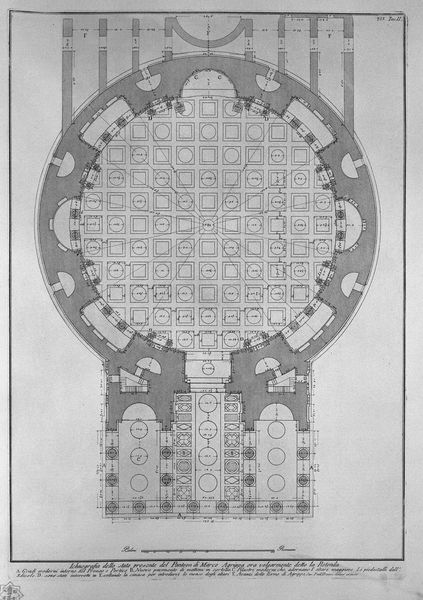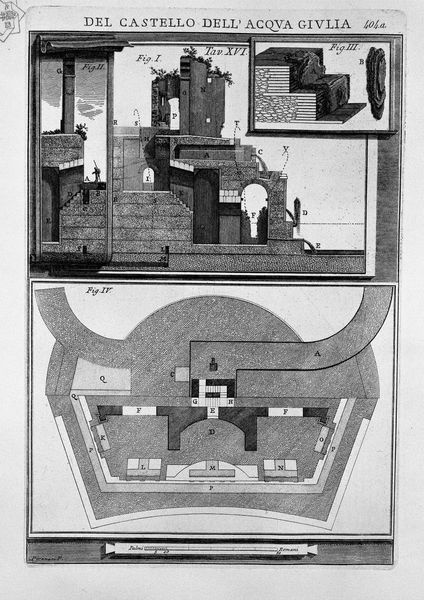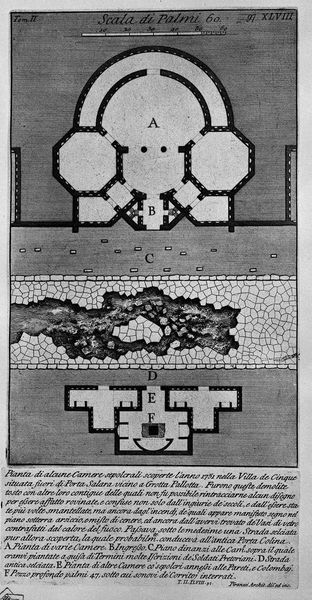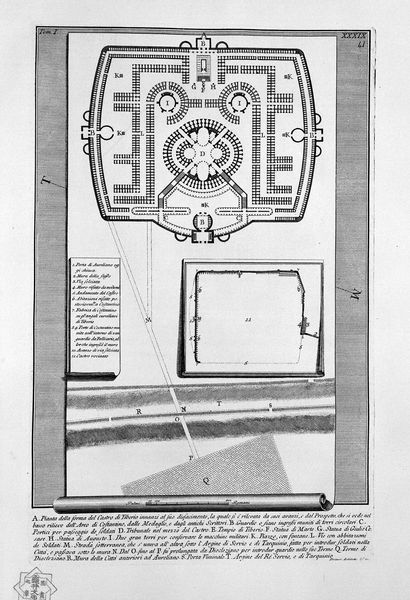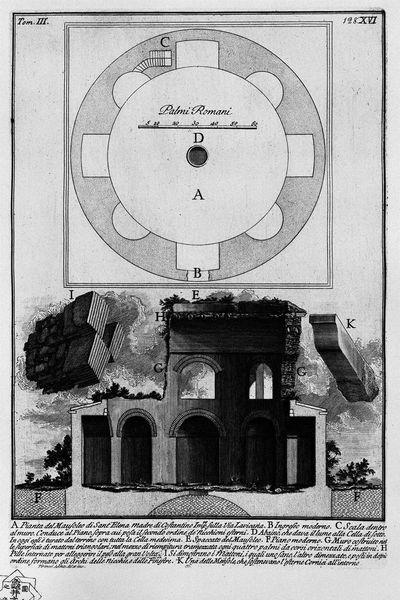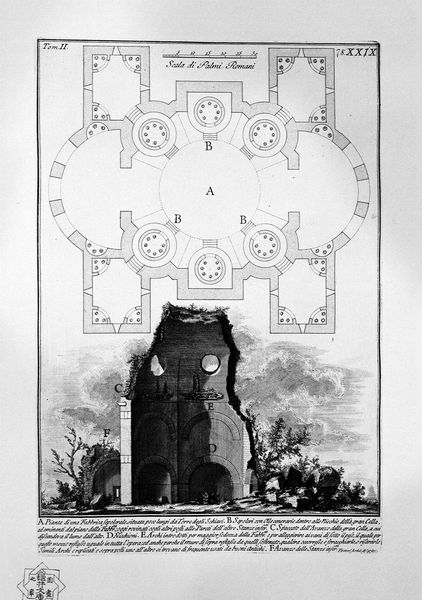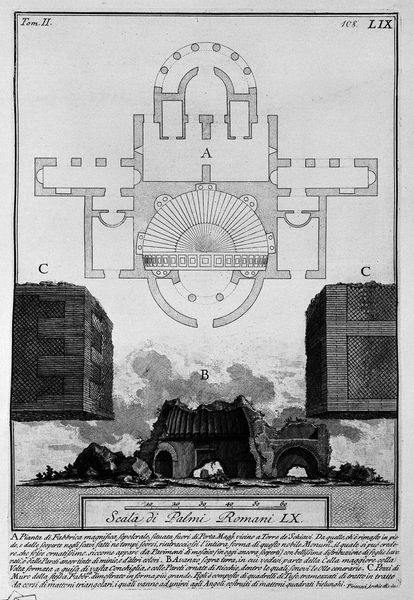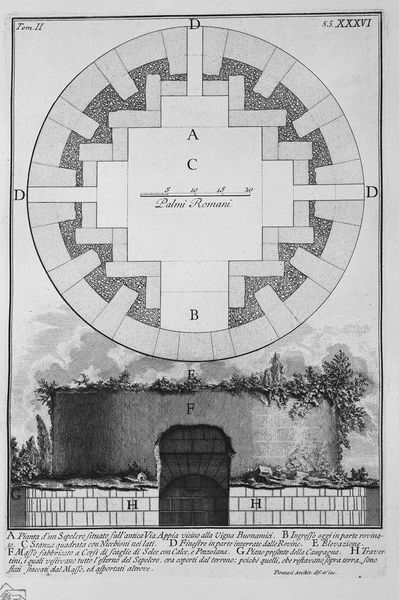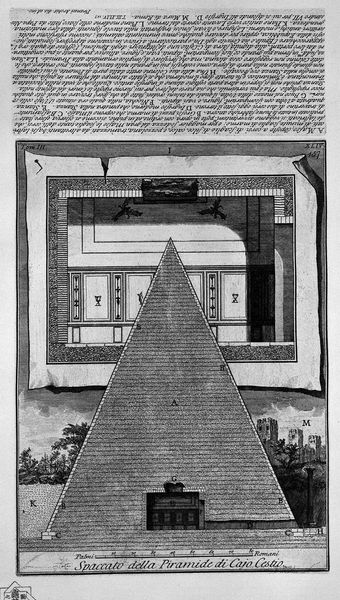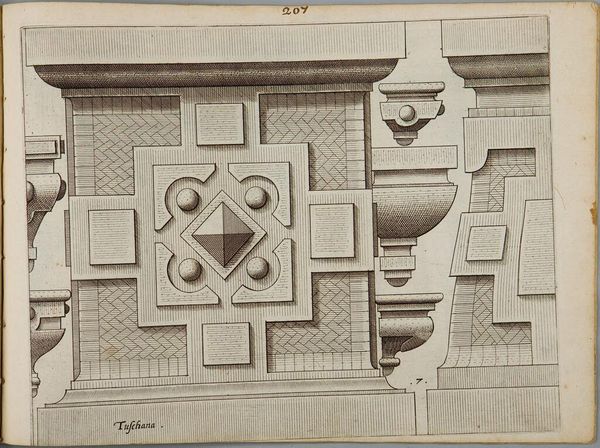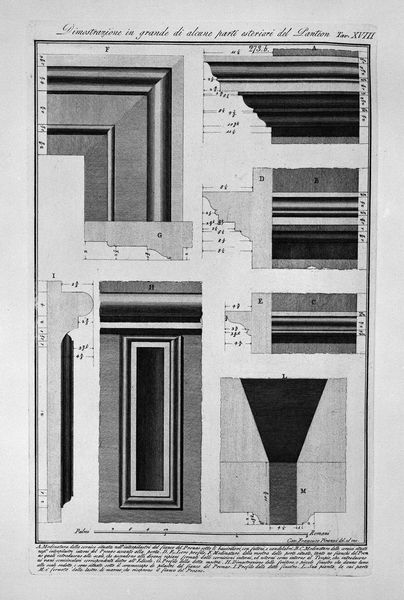
The Roman antiquities, t. 2, Plate XXVI. Previous cross-section of large urn and other details. 1756
0:00
0:00
drawing, print, etching, engraving
#
drawing
# print
#
etching
#
architectural plan
#
perspective
#
romanesque
#
geometric
#
architectural section drawing
#
architectural drawing
#
cityscape
#
engraving
Copyright: Public domain
Curator: This intricate etching by Giovanni Battista Piranesi is titled "The Roman antiquities, t. 2, Plate XXVI. Previous cross-section of large urn and other details," created back in 1756. What strikes you most about it? Editor: It's fascinating, this melding of meticulous architectural plans with what looks like a romantically crumbling ruin. It feels both scientific and melancholic, like someone documenting a lost dream. Curator: That’s a perfect observation. Piranesi was obsessed with Rome's grandeur and decay, wasn't he? This piece showcases his talent for capturing both the structural precision and the romantic allure of ancient architecture. Note how he combines plan and elevation. Editor: Yes, the contrast between the diagrammatic top half, with its clean geometric shapes, and the more evocative, textured lower half is stark. Almost like contrasting ideals against the harsh realities of time. Do you think that the botanical surrounding this lower building serves as visual relief, adding further depth to the image? Curator: I agree. The details he includes lend a tangible sense of place and time. We see the exposed 'Spaccate dell'Avanzi' above the earth, literally “Splits of Advances.” A ruin's ruin so to speak. And then Piranesi the narrator, telling us where in the city outskirts we find this ruin amidst vineyards and the like. It’s history and storytelling, interwoven. Editor: Thinking about this practically, for viewers of his time, it serves as both a record of these structures and also a catalyst, reminding them of the present world through the beauty that emerges out of decline. There is the added understanding of geometric forms for the artist, a sort of divine ratio in this approach of mapping what may not actually exist at all in real life. The "dream," like you mentioned before! Curator: Exactly, and for us today, looking back, it invites reflection on the passage of time and the cyclical nature of civilizations. It urges us to contemplate what endures. Editor: Indeed. It's more than just an architectural study, it's a poetic meditation on history. The composition stays in your mind's eye for far longer than one might initially guess when studying such a complex diagram!
Comments
No comments
Be the first to comment and join the conversation on the ultimate creative platform.

